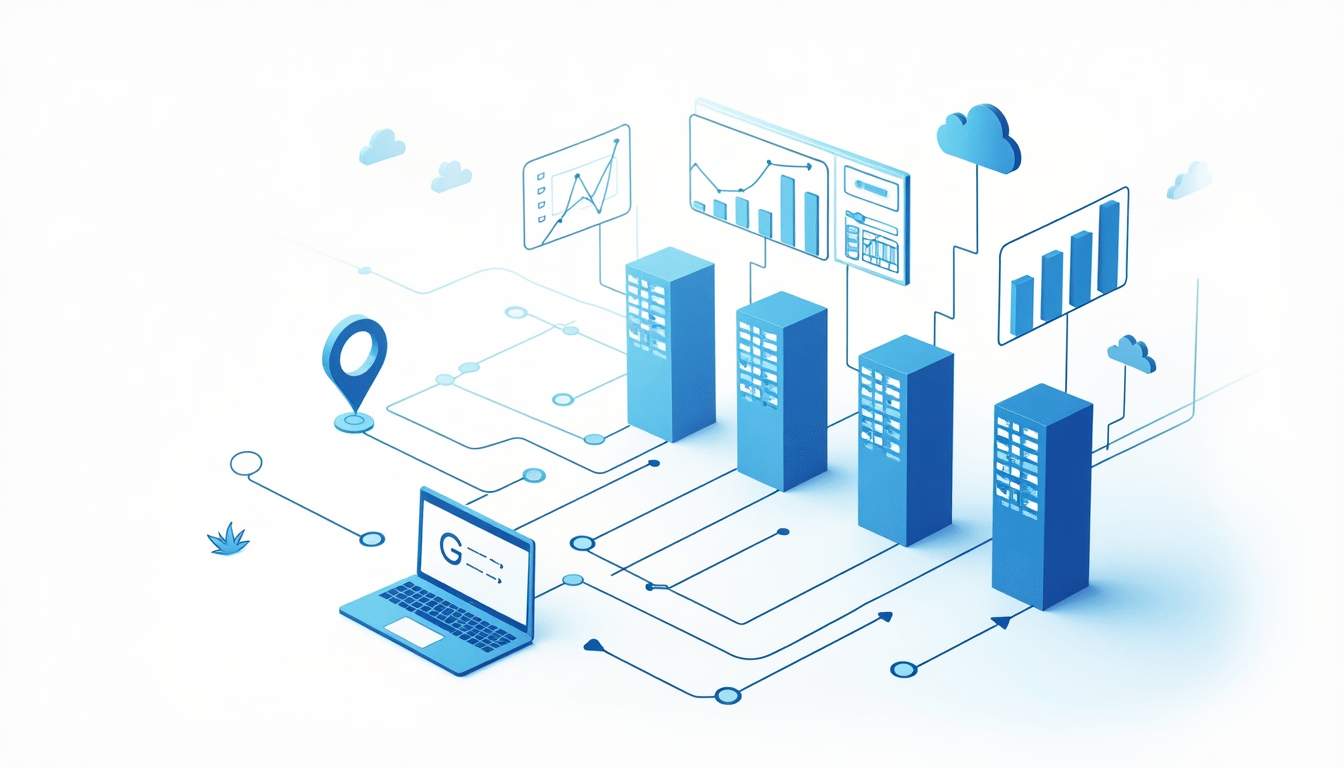How to Monitor and Visualize RPC Performance Metrics
Remote Procedure Call (RPC) endpoints are the backbone of blockchain and Web3 applications, enabling seamless communication between clients and blockchain nodes. As decentralized applications scale, ensuring the reliability and performance of RPC providers becomes critical. Monitoring and visualizing RPC performance metrics not only helps detect outages and latency issues but also optimizes cost and user experience.
This article explores practical strategies and tools for monitoring RPC endpoints, key performance metrics to track, and how visualization can empower developers and operators to maintain robust blockchain infrastructure.
Understanding the Importance of RPC Performance Monitoring
RPC endpoints act as gateways to blockchain networks. When an RPC provider experiences downtime or degraded performance, decentralized applications (dApps) can suffer from transaction delays, failed requests, or even complete outages. The cost of RPC downtime is significant: it can lead to lost revenue, poor user retention, and reputational damage. For instance, a dApp that relies on timely data retrieval for its operations may find itself unable to serve users, resulting in frustration and potential abandonment of the application. As the competitive landscape of blockchain technology continues to evolve, maintaining optimal RPC performance is not just a technical requirement but a strategic imperative.
Moreover, with the rise of multi-provider RPC routing and auto-routing solutions, monitoring becomes more complex but also more critical. Tracking performance across multiple providers ensures that failover and load balancing mechanisms work as intended, minimizing latency and maximizing uptime. This complexity is further exacerbated by the varying performance characteristics of different providers, which can lead to inconsistencies in user experience. Therefore, implementing robust monitoring tools that can aggregate and analyze data from multiple sources is essential for maintaining a seamless experience for end-users.
Key RPC Performance Metrics to Monitor
Effective monitoring begins with identifying the right metrics. Here are the most important RPC performance indicators:
- Latency: The time it takes for an RPC request to be processed and a response returned. High latency can degrade user experience and increase transaction confirmation times. In high-frequency trading environments, even a few milliseconds can have significant financial implications.
- Success Rate: The percentage of successful RPC calls versus failed or timed-out requests. A low success rate signals instability or provider issues, which can lead to a cascading effect on user trust and application reliability.
- Throughput: The number of RPC requests handled per second. Monitoring throughput helps understand load and capacity limits, allowing developers to anticipate scaling needs before performance bottlenecks occur.
- Error Rate: The frequency of errors such as invalid responses, rate limiting, or network failures. A high error rate can indicate underlying issues that need immediate attention, as they can disrupt the flow of transactions and data retrieval.
- Downtime and Outages: Periods when the RPC endpoint is unreachable or non-functional. Tracking these instances is crucial for identifying patterns and potential points of failure, enabling proactive measures to enhance reliability.
- Cost Metrics: For multi-provider setups, tracking cost per request or total RPC expenditure aids in budget optimization. Understanding the financial implications of RPC usage can help teams make informed decisions about provider selection and resource allocation.
In addition to these metrics, it is also beneficial to implement alerting systems that notify developers of performance anomalies in real-time. This proactive approach allows teams to address issues before they escalate into larger problems, ensuring that users remain unaffected. Furthermore, integrating user feedback mechanisms can provide valuable insights into how performance issues impact the user experience, allowing for a more holistic view of RPC performance management.
Setting Up RPC Performance Monitoring
To monitor RPC performance effectively, developers can leverage a combination of custom scripts, third-party monitoring platforms, and blockchain-specific tools.
1. Automated Health Checks and Synthetic Monitoring
Automated health checks simulate RPC requests at regular intervals to measure latency, success rate, and error responses. Synthetic monitoring tools can be configured to send requests mimicking typical dApp interactions, providing real-time insights into endpoint health.
For example, a script might send JSON-RPC calls such as eth_blockNumber or eth_getBalance to multiple RPC providers every few seconds. The response times and error codes are logged for analysis.
2. Integrating with Observability Platforms
Observability tools like Prometheus, Grafana, Datadog, or New Relic can collect, store, and visualize RPC metrics. By instrumenting RPC clients or proxies to emit metrics, teams can build dashboards displaying latency distributions, error trends, and uptime percentages.
Grafana, for instance, excels at creating customizable dashboards that visualize RPC performance across multiple providers, enabling quick identification of bottlenecks or failing endpoints.
3. Leveraging Multi-Provider RPC Aggregators
Modern Web3 infrastructure increasingly relies on multi-provider RPC routing to improve reliability and reduce downtime. Platforms that aggregate multiple RPC providers often include built-in monitoring and analytics. These solutions provide consolidated views of performance metrics, failover events, and cost analytics.
Using a multi-provider RPC router not only improves redundancy but also simplifies monitoring by centralizing metrics across providers.
Visualizing RPC Performance Metrics for Actionable Insights
Raw data alone is insufficient for maintaining high RPC reliability. Visualization transforms metrics into actionable insights, enabling faster troubleshooting and informed decision-making.
Designing Effective Dashboards
When building dashboards to visualize RPC performance, consider these best practices:
- Highlight Key Metrics: Focus on latency, error rates, and uptime as primary indicators.
- Use Time-Series Graphs: Display trends over time to detect patterns such as periodic slowdowns or outages.
- Compare Providers Side-by-Side: For multi-provider setups, visualize metrics per provider to identify underperforming endpoints.
- Set Threshold Alerts: Visual cues like color changes or alerts when latency exceeds acceptable limits or error rates spike.
Example Visualization Components
A comprehensive RPC monitoring dashboard might include:
- Latency Heatmap: Shows latency distribution across different times of day and providers.
- Success vs. Error Rate Chart: Displays the ratio of successful to failed RPC calls over time.
- Downtime Timeline: Marks periods of RPC outages or failover events.
- Cost Analysis Panel: Tracks RPC usage costs per provider to optimize spending.
Advanced Monitoring Strategies for Web3 Applications
As blockchain applications grow in complexity, monitoring strategies must evolve to address new challenges.
Multi-Region and Multi-Cloud Monitoring
RPC endpoints deployed across multiple geographic regions and cloud providers reduce latency and improve redundancy. Monitoring must incorporate multi-region metrics to understand how location impacts performance.
For example, Google’s Multi-Cloud Proxy (MCP) technology enables multi-cloud RPC routing, improving scalability and reliability. Integrating MCP metrics into monitoring dashboards allows teams to track how multi-cloud routing affects latency and failover.
API Orchestration and Aggregation Metrics
Web3 apps often orchestrate multiple APIs and RPC endpoints to serve complex workflows. Monitoring API orchestration layers involves tracking aggregated request success rates, latency, and error propagation.
Understanding the difference between API aggregation (combining multiple APIs) and orchestration (coordinating API calls) helps tailor monitoring to capture the full picture of application performance.
Cost Optimization Through Monitoring
RPC usage can become costly at scale. Monitoring tools that correlate performance with cost data enable teams to optimize provider selection and routing strategies. For instance, auto-routing solutions can dynamically shift traffic to cheaper or faster providers based on real-time metrics, reducing expenses by up to 40% without sacrificing reliability.
Conclusion
Monitoring and visualizing RPC performance metrics is essential for building resilient and efficient blockchain applications. By tracking latency, success rates, errors, and costs, developers gain the insights needed to prevent downtime, optimize user experience, and manage infrastructure expenses.
Combining automated health checks, observability platforms, and multi-provider RPC routing with thoughtfully designed dashboards empowers teams to maintain high availability and performance in an increasingly complex Web3 ecosystem.
As the blockchain infrastructure landscape evolves, adopting advanced monitoring strategies such as multi-cloud proxy integration and API orchestration metrics will be key to staying ahead of performance challenges and scaling successfully.
Ready to elevate your Web3 project's performance and reliability? Start building with Uniblock today and join over 2,000 developers who are already enjoying the benefits of our Web3 infrastructure orchestration platform. With Uniblock, you can seamlessly connect to blockchain data through a single API endpoint that intelligently auto-routes traffic, ensuring maximum uptime, minimal latency, and cost savings. Say goodbye to vendor lock-in and scale your dApps, tooling, or analytics with confidence. Uniblock is your partner in simplifying decentralized infrastructure management.
.svg)






